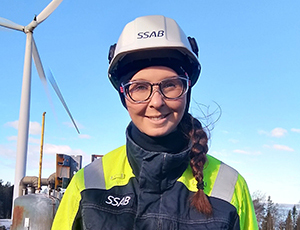Water treatment to protect the environment

All waste water produced in the coke production process is treated in the water treatment plant. The waste water that comes to the treatment plant is toxic so it’s important that the waste water is treated properly to protect the environment. The treatment of water includes both mechanical and biochemical purification. Two process stages are designed to be implemented near future as part of the present process to fulfill new discharge limits.
I got to grew up in a small village in Finland in the middle of nature, agriculture and farming. Already at a young age I learned to respect nature and its beauty. We made the most of the Vasankari’s various beach and rocky shores as well as forests, which created various hobby possibilities. At the end of comprehensive and upper secondary school environmental issues started to rear its head widely. I realized that I want to affect these matters preventatively and Environmental technology felt the right path to me even though it isn’t female-dominated sector. On my free-time I love doing sports, meet my friends and maybe if I have enough time I photograph and paint. I feel that these hobbies are great counterbalance to my daily work.
I’m also going into a project group that studies Black Carbon. The working group that I am going into researches special techniques to map out Black Carbons origins. Black Carbon is the third most damaging element in the atmosphere after carbon dioxide and methane. Black Carbon is small soot formed via incomplete combustion of fossil fuels and biomass. On the other hand, the particles have significant health effects and contribute to global warming. Typical sources of emissions are roadways, industries and heating of houses. The project is managed by the University of Tampere, and the Finnish Meteorological Institute.
Kati Manninen, Water Treatment Plant Specialist, SSAB Europe Oy in Raahe, Finland
SSAB is on an exciting journey of sustainability – Sustainability Expedition. In a series of blogs, some of our employees talk about the various sustainability initiatives under way within the company. How we are working with our vision – A stronger, lighter and more sustainable world.